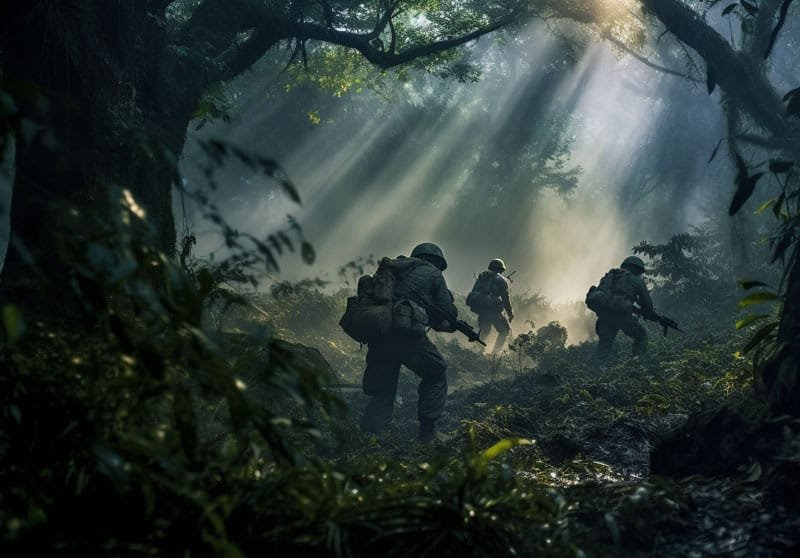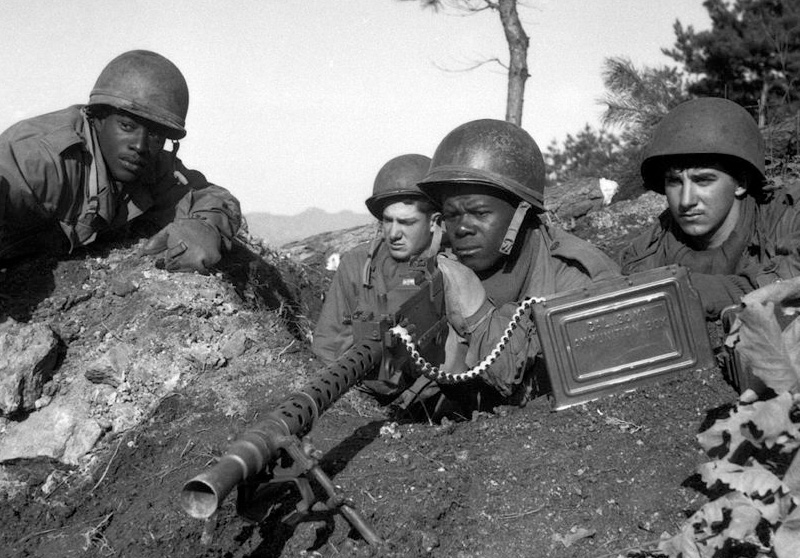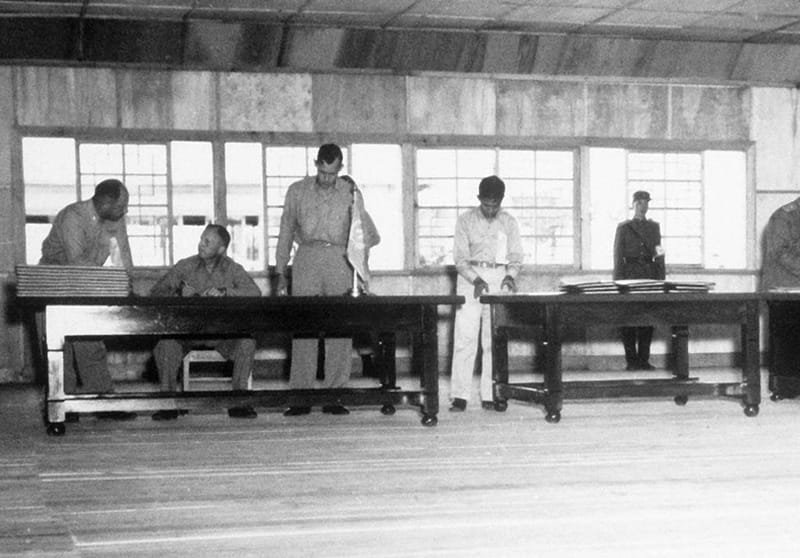Introduction
The Korean War (1950-1953) remains a critical period in the annals of 20th-century global history. Known as the “Forgotten War,” its significance is often overshadowed by World War II and the Vietnam War. However, the Korean War served as a flashpoint that ignited the Cold War tensions between the superpowers of the time, the United States and the Soviet Union. This article seeks to unravel the complexities of the war by examining its key events and milestones.
In this comprehensive exploration of the Korean War, we shall delve into the intricate dynamics that led to the conflict, the notable battles and negotiations, the resulting geopolitical shifts, and the impact on the Korean Peninsula. The timeline, presented chronologically, will guide readers through the principal stages of the war, offering a panoramic view of the decisions, strategies, and actions that unfolded.
Moreover, this article will shed light on the immediate and lasting effects of the war. We will analyze the changing landscapes of politics, economics, and society in the aftermath of the conflict, both within the divided Korean Peninsula and beyond its borders.
An in-depth understanding of the Korean War is crucial for several reasons. Firstly, it offers valuable insights into the early stages of the Cold War, a period that shaped the contours of international relations and global politics for decades. Secondly, it provides a historical lens to examine the ongoing tensions on the Korean Peninsula, informing contemporary discussions on reunification and peace. Lastly, it contributes to our understanding of the impacts of war on nation-building, cultural identity, and societal development.
The knowledge to be gained from this article extends beyond the realms of history and politics. Students, educators, researchers, and policymakers alike will find this piece a valuable resource in their respective fields. It supports a nuanced perspective of global history, underscores the importance of diplomacy and international relations, and encourages a critical examination of the lasting repercussions of warfare.
In this comprehensive timeline, we have endeavored to strike a balance between brevity and depth. Each event is presented with pertinent details, highlighting its significance within the broader narrative of the Korean War. Drawing upon a wealth of primary and secondary sources, we have aimed for an academically rigorous yet accessible presentation of this complex period in history.
Table of Contents
- The Prelude to War
- Outbreak of the Korean War (1950)
- Stalemate and Negotiations (1951-1953)
- The Aftermath
- Final Thoughts
The Prelude to War
Understanding the Korean War necessitates examining the complex backdrop against which it occurred. The war’s genesis can be traced back to the geopolitical realities of the post-World War II era when the Korean Peninsula became a chessboard for competing global powers.
Following the conclusion of World War II, the Korean Peninsula was liberated from 35 years of Japanese colonial rule. However, the liberation did not lead to independence, but instead, the peninsula was divided along the 38th parallel. The Soviet Union occupied the northern part, and the United States took control of the southern part. This division was supposed to be temporary, a pragmatic solution that allowed both powers to accept the Japanese surrender at the end of World War II. Yet, it led to the establishment of two separate governments – the communist Democratic People’s Republic of Korea (DPRK) in the North, led by Kim Il-sung, and the Republic of Korea (ROK) in the South, under the presidency of Syngman Rhee, which was more aligned with capitalist ideology.
The divergent ideologies of the North and South, bolstered by their respective superpower patrons, fueled a burgeoning rivalry. Both governments claimed to be the legitimate government of the entire peninsula, and both were poised for reunification — under their own political systems. This set the stage for the forthcoming conflict.
This period also witnessed the onset of the Cold War between the Soviet Union and the United States. As the two superpowers competed for ideological and geopolitical dominance, their rivalry played out on multiple fronts worldwide. Korea was no exception. The peninsula’s strategic location, adjacent to China, Japan, and the Soviet Union, rendered it a crucial arena for this global power contest.
The years leading up to the war were fraught with border clashes and escalating tensions. Each side was guilty of instigating skirmishes along the 38th parallel. These hostilities, in conjunction with the ambitions of Kim Il-sung and Syngman Rhee, would ultimately culminate in full-scale warfare.
In retrospect, the Korean War was not a sudden or unexpected event but rather the result of a complex interplay of geopolitical tensions, ideological differences, and nationalistic aspirations. The volatile prelude to war underscores the multiple factors at play and their intertwining impacts, which set the peninsula on the path towards conflict.
Sources
- Cumings, B. (2005). Korea’s Place in the Sun: A Modern History. W. W. Norton & Company.
- Stueck, W. (2002). Rethinking the Korean War: A New Diplomatic and Strategic History. Princeton University Press.
- Korean War – Britannica
- The Korean War and its origins, 1945–1953 – U.S. Department of State, Office of the Historian.
Outbreak of the Korean War (1950)
The Korean War officially began on June 25, 1950, when North Korean forces, equipped with Soviet tanks and artillery, launched a surprise attack across the 38th parallel, invading South Korea. The North Korean People’s Army (NKPA) quickly overran Seoul, the capital of South Korea, and drove southward, forcing South Korean and American troops to retreat to a small defensive perimeter around the port city of Pusan, known as the Pusan Perimeter.
The United Nations Security Council, capitalizing on the absence of the Soviet Union, promptly passed Resolution 83, condemning North Korea’s aggression and calling for member nations to assist South Korea. This marked the first military action taken by the UN and led to the formation of the United Nations Command (UNC), composed primarily of American forces along with troops from 15 other countries.
Under the leadership of General Douglas MacArthur, the UNC launched a successful counteroffensive in September 1950, known as the Inchon Landing. This daring amphibious assault behind enemy lines resulted in the recapture of Seoul and the destruction of much of the NKPA.
Buoyed by this victory, the UNC pushed north across the 38th parallel, aiming to unify the peninsula under the control of the South. However, the UNC’s rapid advance towards the Chinese border prompted the People’s Republic of China to enter the war in late October 1950. Chinese forces, known as the People’s Volunteer Army (PVA), launched a massive counterattack, driving UNC forces back across the 38th parallel and recapturing Pyongyang, the North Korean capital, by the end of the year.
The first year of the Korean War was characterized by dramatic shifts in the balance of power. From the initial NKPA offensive to the UNC’s counterattack and the subsequent Chinese intervention, 1950 set the stage for the protracted conflict that would ensue.
The outbreak of the Korean War reflected the broader geopolitical contest of the Cold War era. The invasion of South Korea by communist North Korea was seen as a test of the West’s resolve to counter communist expansion—a key aspect of the United States’ containment strategy. It also underscored the volatile nature of the division of the Korean Peninsula, turning a political border into a battleground.
Sources
- Cumings, B. (2005). Korea’s Place in the Sun: A Modern History. W. W. Norton & Company.
- Stueck, W. (2002). Rethinking the Korean War: A New Diplomatic and Strategic History. Princeton University Press.
- The Korean War – History.com
- Korean War Fast Facts – CNN.
Stalemate and Negotiations (1951-1953)
The ensuing years of the Korean War, from 1951 to 1953, were marked by a stalemate, sporadic fighting, and protracted peace negotiations. The conflict had devolved into a war of attrition, with both sides seeking to maintain and consolidate their positions along the 38th parallel.
In early 1951, United Nations Command (UNC) forces, led by General Matthew Ridgway—who had replaced General Douglas MacArthur—launched a series of counterattacks, driving Chinese and North Korean forces back across the 38th parallel. The UNC regained Seoul in March 1951. By June 1951, the front lines had stabilized close to the 38th parallel, essentially returning to the status quo ante bellum.
This period of the war is perhaps best known for the extensive peace negotiations, which began in July 1951 in Kaesong and later moved to Panmunjom. The negotiations were fraught with difficulties, as both sides grappled with major issues such as the establishment of a new border and the repatriation of prisoners of war. The talks repeatedly stalled and resumed amidst ongoing hostilities, leading to the longest ceasefire negotiations in history at that time.
China’s intervention in the Korean War was significant. Under the leadership of Mao Zedong, China was determined to prevent a unified Korea under U.S. influence on its doorstep. The Chinese intervention not only prolonged the war but also transformed it into a Sino-American confrontation, further entrenching the broader geopolitical contest of the Cold War era.
Throughout these years, major battles continued along the stalemate line, including the Battle of Heartbreak Ridge and the Battle of Old Baldy. These battles were characterized by fierce combat for small territorial gains, reflecting the grinding nature of the stalemate.
The stalemate and peace negotiations of the Korean War underscore the complexities of achieving a negotiated settlement in the midst of ideological conflict and geopolitical rivalries. The protracted negotiations and intermittent fighting strained the resources and resolve of both sides, ultimately leading to the signing of the Armistice Agreement on July 27, 1953.
Sources
- Cumings, B. (2005). Korea’s Place in the Sun: A Modern History. W. W. Norton & Company.
- Stueck, W. (2002). Rethinking the Korean War: A New Diplomatic and Strategic History. Princeton University Press.
- Stalemate in Korea – History.com
- Korean War Armistice – Britannica.
The Aftermath
The signing of the Armistice Agreement on July 27, 1953, ended the active combat of the Korean War but did not officially terminate the war, as no peace treaty was ever signed. The Armistice established the Korean Demilitarized Zone (DMZ), a heavily fortified buffer zone along the 38th parallel, which still serves as the de facto border between North and South Korea today.
The aftermath of the war had profound and lasting impacts on the Korean Peninsula and the wider world. Both Koreas were left devastated by the conflict, with cities and infrastructure heavily damaged, economies in ruins, and millions of people displaced. The death toll was enormous, with estimates varying widely but likely exceeding two million.
In the South, the war’s devastation was followed by remarkable economic development. Known as the “Miracle on the Han River,” South Korea transformed from a war-torn agrarian society into a global economic powerhouse, becoming a leading exporter of automobiles, electronics, and other high-tech goods. This economic success, however, was initially accompanied by political repression under a series of authoritarian regimes until the country transitioned to democracy in the late 20th century.
North Korea, on the other hand, embarked on a path of isolation and authoritarianism. Under the leadership of Kim Il-sung and his successors, the DPRK adopted a policy of Juche, or self-reliance, which included a centrally planned economy and an emphasis on militarization. Despite periods of economic growth in the initial post-war decades, North Korea has faced significant economic difficulties, including a devastating famine in the 1990s. The DPRK has remained one of the world’s most repressive states, characterized by human rights abuses and a highly militarized society, including the development of nuclear weapons.
Globally, the Korean War significantly affected the course of the Cold War, confirming the policy of containment adopted by the United States to halt the spread of communism. The war demonstrated that the United States was willing to commit its military forces to this policy. The conflict also highlighted the role of the United Nations in global peacekeeping and security, despite its limited success in resolving the Korean War.
Finally, the Korean War impacted the regional balance of power in East Asia. It exacerbated tensions between the United States and China, setting the tone for Sino-American relations for the next two decades. It also reinforced the US-Japan alliance, as Japan was used as a major staging area and source of materials for the UNC, leading to Japan’s economic resurgence.
In sum, the aftermath of the Korean War significantly shaped the geopolitical dynamics of the Korean Peninsula, the East Asian region, and the broader global context, the effects of which are still evident today.
Sources
- Cumings, B. (2005). Korea’s Place in the Sun: A Modern History. W. W. Norton & Company.
- Stueck, W. (2002). Rethinking the Korean War: A New Diplomatic and Strategic History. Princeton University Press.
- Aftermath of the Korean War – Britannica
- Legacy of the Korean War – History.com.
Final Thoughts
In comprehending the breadth and depth of the Korean War, it is evident that this conflict was not just an isolated historical event. Instead, it served as a significant turning point in global politics, shaping the trajectory of the Cold War and the geopolitical dynamics of the East Asian region.
The Korean War is a stark reminder of the complex interplay of ideological, political, and military forces on a global stage. The conflict was not confined within the borders of the Korean Peninsula but was deeply entwined with the broader narrative of international relations in the mid-20th century.
As we trace the trajectory of this war, from its inception to its unresolved conclusion, we are reminded of the lasting impacts of such conflicts. The war transformed the Korean Peninsula, forging two distinctly divergent paths for the North and South. These repercussions are still felt today, with the peninsula remaining a hotbed of tension and the focus of global diplomatic efforts.
Moreover, the Korean War holds lessons for diplomacy and conflict resolution. The protracted negotiations and eventual armistice underscore the challenges in achieving peace amidst ideological differences and geopolitical rivalries. The war’s legacy also underscores the importance of multilateral cooperation, as exemplified by the United Nations’ role during the conflict.
The Korean War, therefore, remains far from forgotten. Its history, implications, and lessons continue to be relevant in our contemporary global landscape, informing policy, diplomacy, and research. Its examination serves as a significant case study in the historical, political, and social dynamics of global conflicts.
- The Battle of Midway: Turning the Tide in the Pacific - June 7, 2023
- The D-Day Operation of June 6, 1944 - June 6, 2023
- The B-29 that Changed History - June 4, 2023


